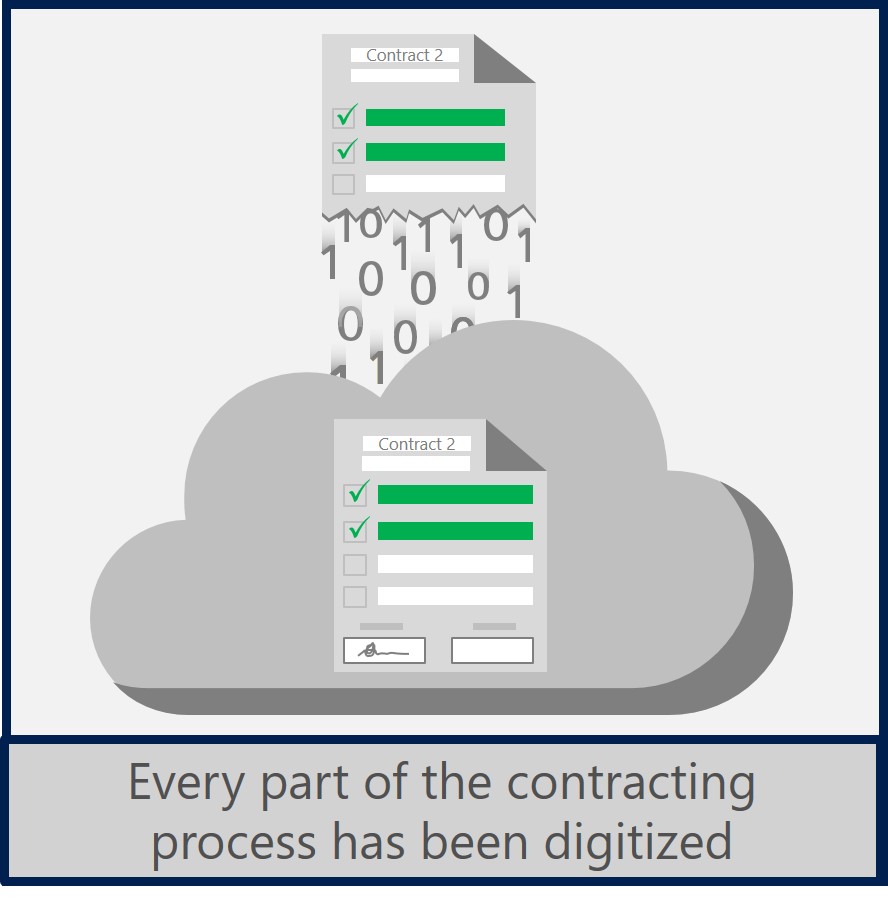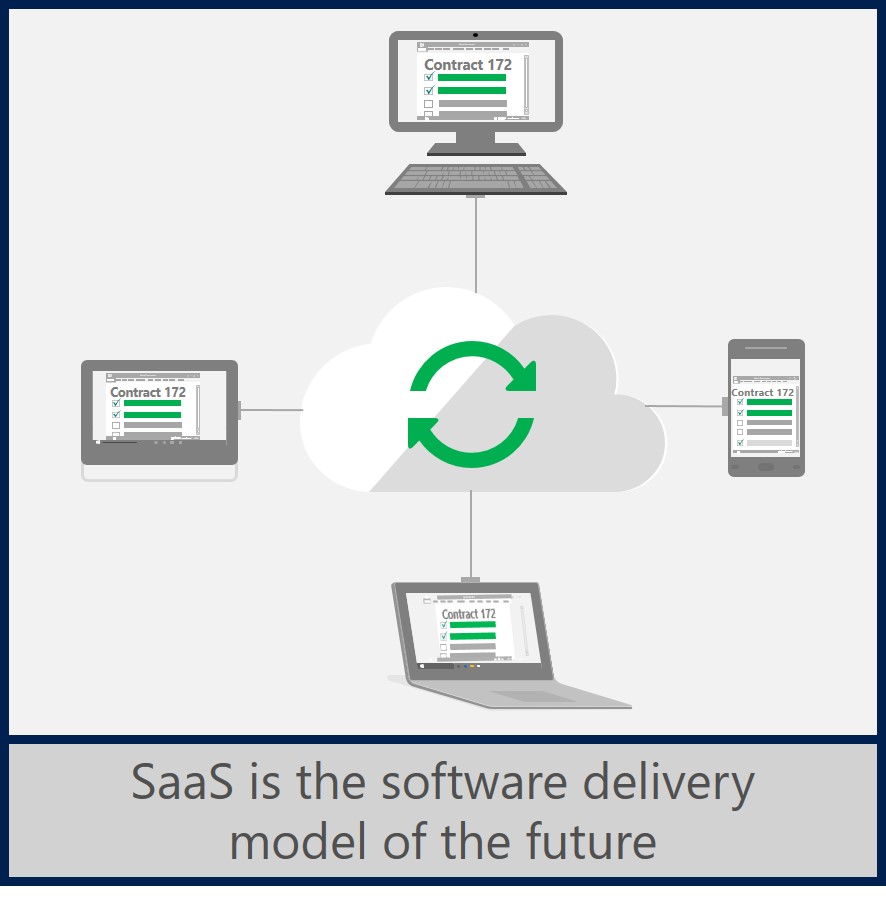
5 reasons CLM transformation is a top manufacturing priority
In 1913, Henry Ford installed the first moving assembly line in his plant. His simple idea for an automated process catalyzed explosive company growth and became one of the most important innovations in manufacturing history.[i] Ford knew speed and efficiency were keys to manufacturing success, and the same is still true for manufacturers today.
We are at a similar juncture in the manufacturing industry, where technology is disrupting the status quo. Everyone in manufacturing organizations, from CEO to seller, is facing pressure to speed up processes and adapt to handle more complex configurations and agreements. One critical area of transformation is contract lifecycle management (CLM). For manufacturers, CLM systems provide a foundation for the business and control every dollar that comes in or goes out of an organization. When manufacturers consider solutions to support their digital transition, there are 4 reasons they should make overhauling their CLM system a top priority:
 1. The speed of global business is accelerating and now demands a faster contracting process
1. The speed of global business is accelerating and now demands a faster contracting process
Manufacturers are all facing more complex commercial relationships as digital transformation is driving an increase in the speed of business. With customers demanding more specific service-level agreements and faster turnaround times, companies are increasingly dependent on suppliers to meet their contractual obligations on time. Many manufacturers use linked contracts, which structure services with subcontractors who have different capabilities, to complete these new types of service-level obligations. Although they help distribute risk throughout the supply chain, they can be tedious to create and difficult to maintain without a single, enterprise-wide system that takes care of tracking the details.
Tracking these contracts and the details throughout the enterprise is currently a manual, time-consuming task, and is one of the biggest gaps for manufacturers in their commercial process.[i] For example, repetitive email queries on contract status or contract details between team members means employees have to focus on providing support for questions instead of moving the contract forward. Companies need to look at a new, digital approach for managing complex contracts if they want to accelerate contract velocity while minimizing risk and improving compliance.
2. Technological advances mean that every piece of the contracting process can be digitized
Digital transformation has initiated tremendous change throughout manufacturing enterprises, with many departments now operating in a world where processes that were once manual are now entirely digital. By directing workflows through digital applications, manufacturers can automate countless functions, reduce risk, cut spending and create contracts anywhere, freeing up employee time for more business-critical tasks.
 With the advent of E-signatures, companies can now digitize the entire contract management process for legal, sales, and procurement teams. Think of employees in the sales organization working with sell-side contracts. Since customer information and contract data can be stored in the cloud, their entire contract management process has the potential to be automated, from order to contract creation and approval. For example, digital templates and step-by-step workflows make it easy to create a contract, and access to a library of standard clauses reduces time spent ensuring compliance. Now that all steps of the process can be completed online over the cloud, manufacturers face an uphill battle to keep pace with organizations who have cloud-based, intelligent CLM systems.
With the advent of E-signatures, companies can now digitize the entire contract management process for legal, sales, and procurement teams. Think of employees in the sales organization working with sell-side contracts. Since customer information and contract data can be stored in the cloud, their entire contract management process has the potential to be automated, from order to contract creation and approval. For example, digital templates and step-by-step workflows make it easy to create a contract, and access to a library of standard clauses reduces time spent ensuring compliance. Now that all steps of the process can be completed online over the cloud, manufacturers face an uphill battle to keep pace with organizations who have cloud-based, intelligent CLM systems.
3. The self-service nature of today’s consumer experiences is reshaping professional work styles
 Digital transformation has changed expectations around self-service. 73% of customers say that valuing their time is the most important thing companies can do to provide them with good service. Additionally, web self-service use increased from 67% in 2012 to 76% in 2014.[ii] Self-service is making things easier, and the desire to “do-it-yourself” doesn’t change when those customers go to work.
Digital transformation has changed expectations around self-service. 73% of customers say that valuing their time is the most important thing companies can do to provide them with good service. Additionally, web self-service use increased from 67% in 2012 to 76% in 2014.[ii] Self-service is making things easier, and the desire to “do-it-yourself” doesn’t change when those customers go to work.
This shift in expectations creates an exceptional opportunity for companies to transform their contracting processes and embrace simple, self-service workflows. These tools ease tedious obstacles such as review and approval cycles and empower employees to complete basic contracting tasks themselves, within delineated guardrails. This frees all teams – sales, procurement, legal and operations – to operate in sync with one another without the need to repeatedly scale up departments or load balance. For example, writing contracts from pre-approved clauses means that legal teams can focus on only reviewing more important deviations. By making self-service simple, manufacturers also cut down on maverick contracting by well-intentioned employees trying to accelerate the process themselves.
4. An upswing in government oversight has created new risk management needs
 While risk management has always been top of mind for manufacturers, staying compliant has become harder than ever as more regulations appear and the penalty for non-compliance increases. In just one example, fines for violations of the U.S. Foreign Corrupt Practices Act (FCPA) in the last 10 years have been higher than in the previous 30, and average settlements in the three-year period between 2014-2016 topped $89 million.[iii] Organizations are expected to have the breadth of knowledge needed to cover regulatory responsibilities that might exist for a product or service across multiple geographies. For example, new regulations for privacy are frequently released in the EU. Manufacturers need to be able to constantly check thousands of complex contracts against these laws, an incredibly time-consuming task when attempted manually.
While risk management has always been top of mind for manufacturers, staying compliant has become harder than ever as more regulations appear and the penalty for non-compliance increases. In just one example, fines for violations of the U.S. Foreign Corrupt Practices Act (FCPA) in the last 10 years have been higher than in the previous 30, and average settlements in the three-year period between 2014-2016 topped $89 million.[iii] Organizations are expected to have the breadth of knowledge needed to cover regulatory responsibilities that might exist for a product or service across multiple geographies. For example, new regulations for privacy are frequently released in the EU. Manufacturers need to be able to constantly check thousands of complex contracts against these laws, an incredibly time-consuming task when attempted manually.
 5. The power of the cloud has made Software as a Service (SaaS) solutions the software delivery model of the future
5. The power of the cloud has made Software as a Service (SaaS) solutions the software delivery model of the future
SaaS solutions are now the norm for manufacturers who recognize that speed, flexibility and enterprise-wide visibility are the keys to effective contract management. A cloud-based solution easily integrates into existing systems so that organizations see time to value in weeks, not months. Cloud nativity also means it is easy to build in workflows and tools that can be accessed by employees across the organization anytime, anywhere, from any device. Cloud-based applications are also highly flexible, meaning customers can adopt a configuration versus customization paradigm.
Take the leap to modernize your CLM
New cloud-based CLM technology empowers employees in every area of an organization with the tools they need to communicate effectively and track contracts efficiently throughout their lifecycle. The Icertis Contract Management (ICM) platform, built on Microsoft Azure, is an easy way for manufactures to upgrade their system and maximize security. It equips manufacturing organizations with the intelligence, agility and enterprise-wide capabilities they need to manage the complexity of contracts in an era of rapid digitization. Self-service workflows streamline and accelerate the contracting process for employees. Icertis supports improved compliance at every point, helping organizations avoid costly errors, promoting proactive management. Icertis is dedicated to helping manufacturers solve their hardest contract management problems on the easiest to use platform. Try the solution on Microsoft AppSource today to begin your digital transformation.
[i] https://www.icertis.com/blog/its-10-pm-do-you-know-where-your-contracts-are/
[ii] http://blogs.forrester.com/kate_leggett/16-01-28-online_self_service_dominates_yet_again_why_its_an_effortless_way_to_get_to_your_answers




